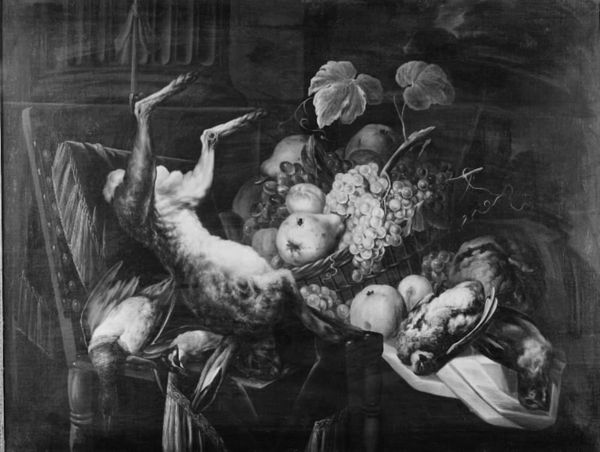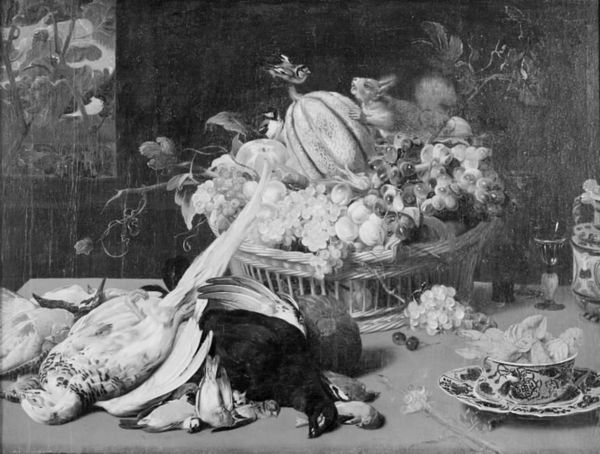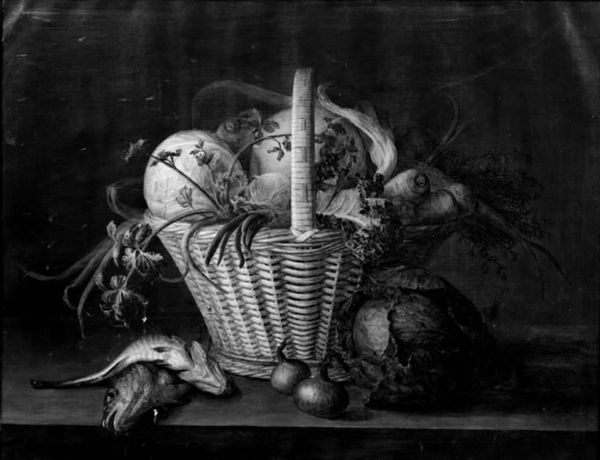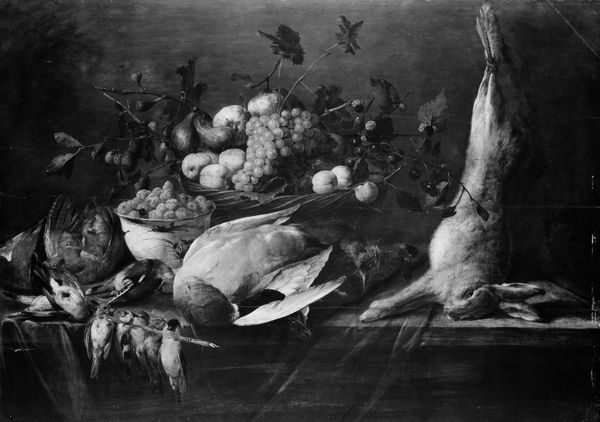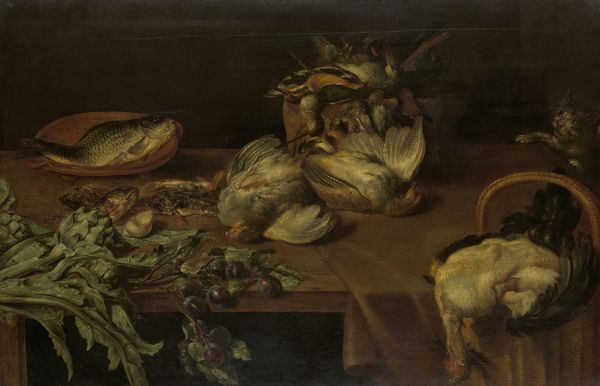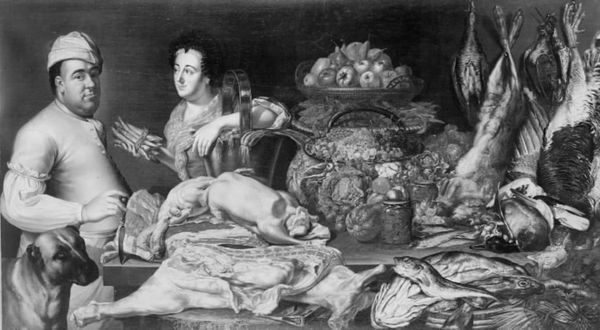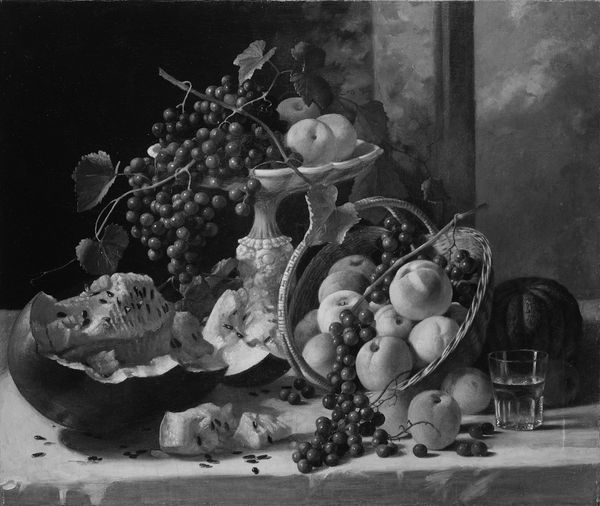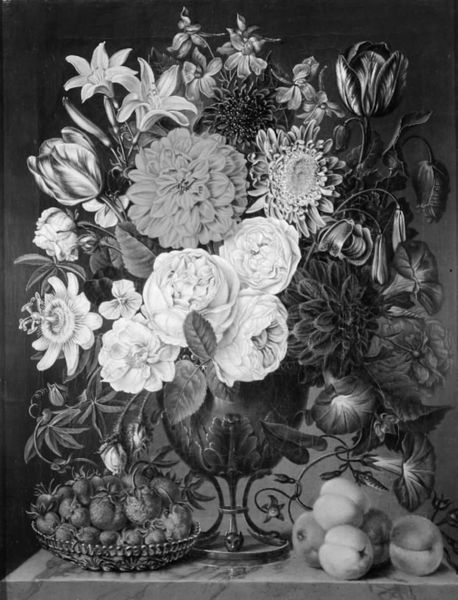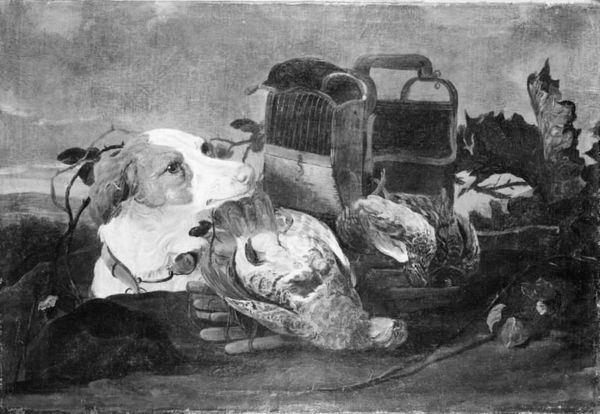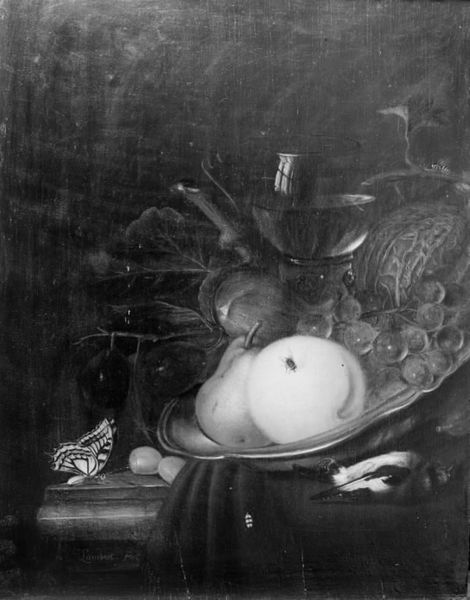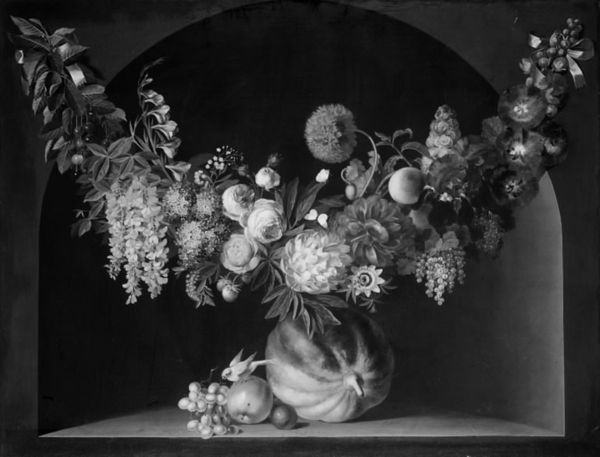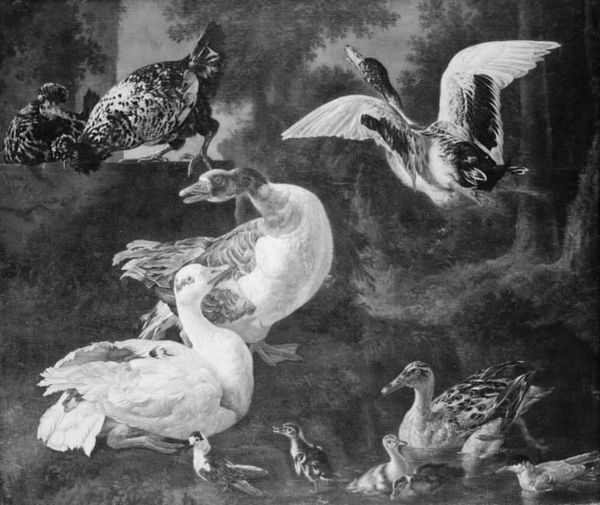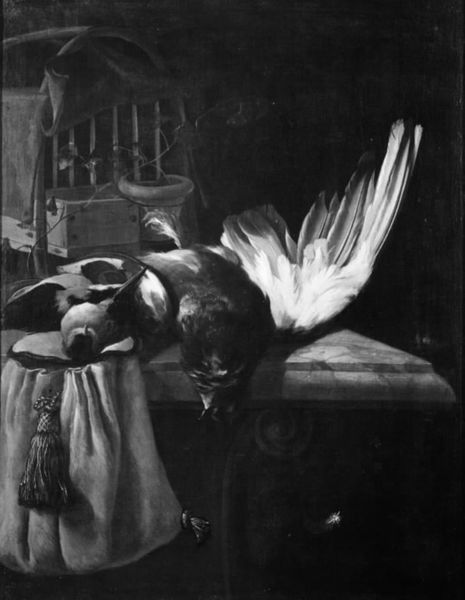
Still Life with Small Game, Fruit, Lobster and a Squirrel 1594 - 1657
0:00
0:00
painting, oil-paint
#
baroque
#
painting
#
oil-paint
#
monochrome
#
realism
#
monochrome
Dimensions: 90.7 cm (height) x 122 cm (width) (Netto)
Editor: So this is "Still Life with Small Game, Fruit, Lobster and a Squirrel," likely from between 1594 and 1657. It's an oil painting. The subject matter is a little gruesome, but I find the composition strangely appealing, with the basket of fruit offset against the dead game. What catches your eye? Curator: The symbolic weight, undeniably. In the arrangement of dead game alongside vibrant fruit, a dialogue emerges about the fleeting nature of life and earthly pleasures. It reminds me of the "vanitas" tradition, urging viewers to reflect on mortality. Have you noticed how the squirrel, often a symbol of hoarding, is juxtaposed with this scene of abundance and death? Editor: I see what you mean! The squirrel almost looks out of place. What does the lobster symbolize? Curator: The lobster, a luxury import at the time, speaks to status and wealth, yet its presence among the dead animals introduces a note of irony. These displays of wealth are ultimately temporary. Think of these still lifes as complex cultural artifacts. The inclusion of specific fruits may also carry symbolic resonance linked to fertility or abundance. Editor: That’s a lot to take in! So, it’s not just a pretty picture of food… Curator: Precisely. Each element is carefully chosen. By analyzing them together, we reveal hidden meanings relevant to the anxieties of the time: the relationship between humanity and nature. The temporality of worldly goods! Editor: It definitely makes me look at it in a new way. I hadn't considered the underlying commentary about social class at all, especially regarding such familiar imagery. Curator: This kind of close reading gives new perspectives on visual traditions.
Comments
No comments
Be the first to comment and join the conversation on the ultimate creative platform.
